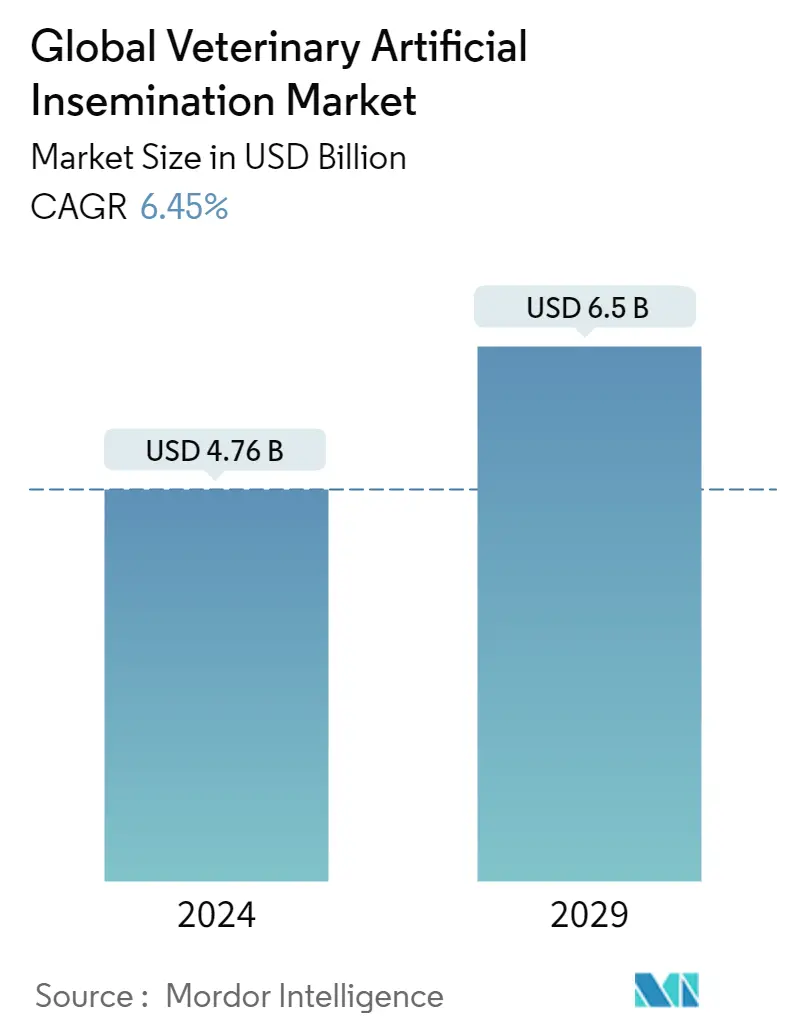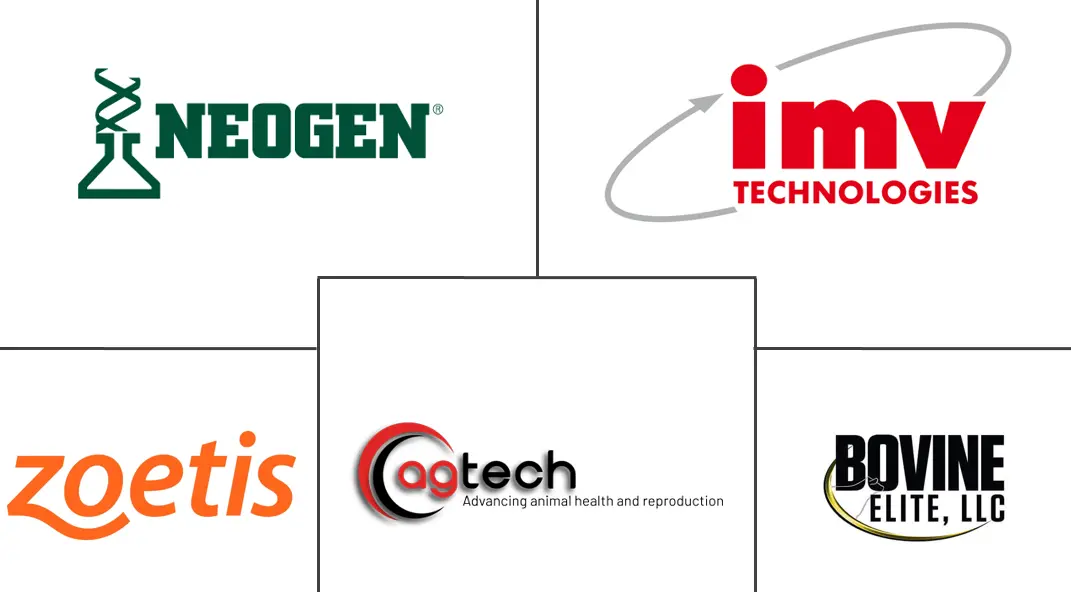Market Size of Global Veterinary Artificial Insemination Industry

| Study Period | 2019 - 2029 |
| Market Size (2024) | USD 4.76 Billion |
| Market Size (2029) | USD 6.50 Billion |
| CAGR (2024 - 2029) | 6.45 % |
| Fastest Growing Market | Asia Pacific |
| Largest Market | North America |
Major Players
*Disclaimer: Major Players sorted in no particular order |
Need a report that reflects how COVID-19 has impacted this market and its growth?
Veterinary Artificial Insemination Market Analysis
The Global Veterinary Artificial Insemination Market size is estimated at USD 4.76 billion in 2024, and is expected to reach USD 6.5 billion by 2029, growing at a CAGR of 6.45% during the forecast period (2024-2029).
The COVID-19 pandemic has created a significant adverse impact on different sectors, including the veterinary sectors in several countries. It has caused disruptions in livestock and poultry value chains, leading to a fall in the procurement and sale of animal-sourced food. Animals suffered due to a lack of adequate feed and veterinary care, such as the need for timely artificial insemination, timely pregnancy check, and de-worming. To safeguard farmers and employees against COVID-19, the Animal Husbandry Department of India launched a program in June 2020, which offered telephonic assistance to poultry farmers and owners. Additionally, artificial insemination was delivered to farmers at their doorstep during the COVID-19 pandemic. Therefore, such initiatives have contributed to market growth.
The factors driving the market growth include the growing animal and fishery industry and the increasing burden of sexually transmitted diseases. As per an article titled 'Controlling sexually transmitted diseases in cattle' published in March 2022, sexually transmitted diseases (STDs), such as vibriosis and bovine trichomoniasis (trich), can become a major problem and result in substantial production losses. Hence, protecting farm animals from the spread of sexually transmitted diseases is expected to drive the market. Furthermore, globally, the demand for the superior breed of animals is increasing, which, in turn, is increasing the demand for artificial insemination procedures in animals. Additionally, globally, the rising human population and associated advantages, such as decreased cost of housing, increased efficiency of bull usage, safety for farmers and animals, genetic selection, and handling of bulls, are anticipated to drive market growth in the future.
The artificial insemination technique helps reduce many of the transmitted diseases among veterinary animals. It allows greater efficiency in terms of genetics and crossbreeding of animals. As per an article titled 'Success rate of artificial insemination, reproductive performance and economic impact of the failure of first service insemination: a retrospective study' published in June 2022, artificial insemination (AI) is recognized as the best technique for increasing reproductive capacity and has received a widespread application in farm animals in Ethiopia. The success of AI is also influenced by endometrial thickness, artifcial insemination timing, insemination frequency, and ovarian stimulation protocols. This is expected to increase the demand for artificial insemination (AI) and drive market growth in the forecast period.
Furthermore, as per the Food and Agriculture Organization of the United Nations, October 2021, approximately 50% of the world's population consumes fish as food, which is driving the need for larger production of animals. Therefore, this is expected to boost the demand for veterinary artificial insemination.
However, the high cost of equipment and procedures is expected to restrain the market growth during the forecast period.

